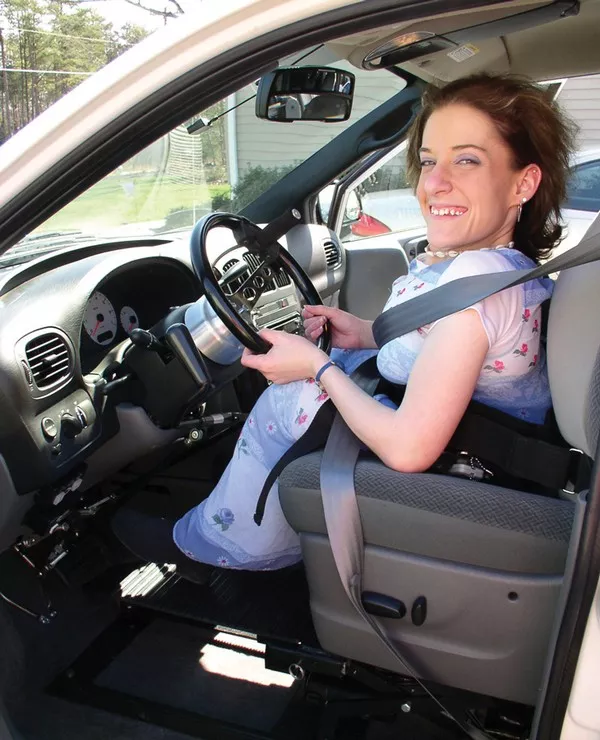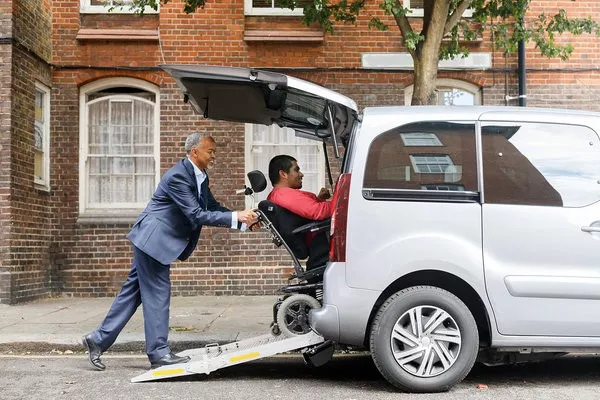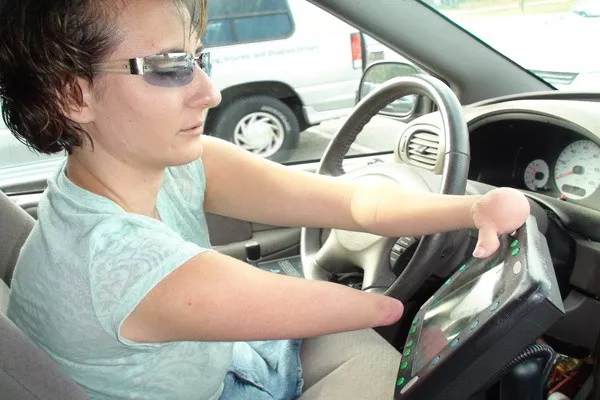Everyone has the right to be independently mobile; there’s no reason to exclude most people as long as they are of legal age and are generally law-abiding citizens. Having certain convenience that makes our life easier isn’t limited to able-bodied members of society, but for persons with disabilities (PWDs) as well.
One such convenience is having the capability to get to and fro using a personal vehicle. There’s no denying that traveling this way is easier as well as safer for a handicapped individual.
Unfortunately, many car companies see little incentive in catering to this particular niche market, with four-wheeled vehicles generally catering almost exclusively towards able-bodied drivers and passengers. One reason is cost: having to retool specific assembly lines to make vehicles that can accommodate certain disabilities is pricey.
These disabilities also vary by degrees, which does not guarantee that the cars built to address them can be sold in numbers large enough to justify production. A more common approach is to implement custom modifications specific to a handicapped person’s condition.
The following are just some of the usual vehicle modifications Philkotse.com has found that are intended to accommodate their handicapped owners. Note that some of these entail only minor alterations so that the vehicle can still be operated by other drivers, while there are those that require extensive changes and customized solutions.
How To: Drive with a Physical Disability
1. The steering wheel
That large round handle on the dashboard is where all the action happens; it’s responsible for the vehicle’s maneuverability, and not being able to handle it properly can put people’s lives at stake. For people who have lost fingers or an entire arm, this can be a daunting task, but modifications can mitigate the difficulty of having to steer with incomplete limbs.
Depending on the degree and severity of the disability in question, several custom solutions can be put in place:
- If the hands and wrists are fully disabled, a steering cuff can aid the driver to manipulate the steering wheel.
- For those with amputated arms but choose to use a prosthetic hook, amputee rings can be installed.
- If a disabled person is able to use, or has sufficient strength in, only one hand, a steering knob or ball is fitted to the wheel and adjusted depending on the driver’s strength and ability. This is usually a quick-release contraption, easily removable in case an able-bodied driver needs to control the vehicle.
- Adjustments can also be made to the steering mechanism, reducing the effort required for those who have low physical endurance and strength.

Insufficient control over the steering wheel can put people’s lives at stake
2. The driver’s seat
The driver’s seat should be comfortable yet provide ample support to the handicapped driver, if not more comfortable than it would be for an able-bodied one. Proper seating encourages enables drivers to concentrate on the road ahead and stay alert in all surroundings. Some of the difficulties that handicapped people experience with regard to driver’s seats are:
- The driver cannot find the optimal position between comfort and being able to see the road clearly.
- The driver has difficulty getting into and leaving the relatively tight space.
- The driver’s seat is ill-suited for a handicapped driver.
Common modifications to address these issues include:
- Removing the stock driver’s seat, which will leave an empty area large enough to fit a wheelchair where the driver can sit and take the controls. The stock driver’s seat can be removed to accommodate mobility devices such as wheelchairs.
- Swivel chairs can be installed if the driver wishes to retain the stock seat. Upon entering the vehicle, the person could easily turn the swivel chair and transfer himself from the wheelchair and on to the driver’s seat.
- Some custom access seats can rotate, protrude from the vehicle and lower themselves to facilitate easier boarding.

The driver's seat should be comfortable for handicapped drivers, too
3. Ingress and egress
The ease of entering and exiting the vehicle is as important as driving it. Able-bodied and handicapped passengers should encounter little to no difficulty with regard to ingress and egress; the fact remains, however, that some vehicles are more challenging to get into and out of, especially for PWDs.
Most of the time, the problem has something to do with the mobility aids used, such as wheelchairs, walkers and crutches, since their added bulk tends to take up space inside the vehicle. This makes ingress and egress even more stressful for PWDs, apart from having to deal with how the other occupants think of such a hassle.
Several solutions can be applied to make ingress and egress easier for PWD passengers:
- Lifts are useful when entering and exiting the vehicle. There are several types of lifts depending on what the disabled person needs. Some lifts can be used to carry the mobility device only for storage, while others can lift both the person and the wheelchair. More advanced lifts can automatically raise the wheelchair on to the roof of the car, where it can be kept in place until it can be lowered again as needed with the push of a button.
- An inexpensive alternative for handicapped people is the use of ramps since these often do not need to be powered devices. The ramp can be stored under the vehicle’s floor, pulled out for use, and then stowed again when done.

The use of ramps allows PWDs to enter and exit the vehicles without having to leave their wheelchairs
4. Other adaptive modifications
There are other vehicle features that we tend to take for granted as able-bodied users, yet handicapped people struggle with on a regular basis. These should also be adjusted accordingly, enhancing safety and convenience for everyone.
- Some people may have difficulty locking the door and windows. Automatic locking mechanisms can assist in securing these points of entry, independent of the driver’s control.

There are other car features specially designed to help the handicapped
- Secondary controls like elbow switches can aid in providing driver input for ancillary features such as turn signals, horn, wipers and hazard lights.
- If a PWD opts to occupy the wheelchair when operating a motor vehicle, tie downs can be used to secure the chair’s wheels and hold it in place.











